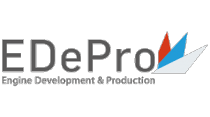United States' Water Treatment Chemicals Industry, 2025 - Key Players are Kemira, Kurita Water Industries, Solenis, Ecolab and Suez
DUBLIN, July 10, 2020 /PRNewswire/ -- The "United States Water Treatment Chemicals Market - Growth, Trends, and Forecast (2020 - 2025)" report has been added to ResearchAndMarkets.com's offering.
https://mma.prnewswire.com/media/539438/Research_and_Markets_Logo.jpg
The United States water treatment chemicals market is expected to witness a CAGR of over 4% during the forecast period.
The market is majorly driven by stringent government regulations to control production and disposal of wastewater. The hazardous nature of hydrazine is likely to act as a restraint to the water treatment chemicals market.
The United States water treatment chemicals market is moderately fragmented, with the major players accounting to a low share of the market. Key players in the market studied include Kemira, Kurita Water Industries, Solenis, Ecolab, and Suez, among others.
Key Highlights
-- Some of the other major drivers of the market include the increasing
demand to treat wastewater produced from power industry.
-- The shifting focus toward the usage of green chemicals is providing
opportunities for the market during the forecast period.
-- Among the end-user industries, municipal industry accounts for the major
market share and is likely to maintain its position during the forecast
period.
Market Trends
Corrosion & Scale Inhibitors to Dominate the Market
-- Corrosion inhibitors are general purpose chemicals, applied to deal with
corrosion caused in boilers. Corrosion occurs due to the reaction of
oxygen with metallic parts in a boiler to form oxides. Corrosion affects
the metallic part of the boiler, thereby increasing the cost of energy
and maintenance. They act by forming a thin layer of barrier over the
exposed parts of the boiler from the water.
-- When untreated water is used in the boiler, it brings with it several
soluble salts. These remain soluble in cold water. However, with the
rise in temperature inside the boiler, the salts become insoluble.
Carbonates and bicarbonates are formed from calcium and magnesium
chemicals that are dissolved in water. This residue matter gets
deposited in the boiler surface and forms a hard coating, which is known
as scale. The problem with the scales is that they block efficient heat
transfer, create localized heating, increase power consumption and
maintenance expense, and occasional boiler failure.
-- Corrosion and scale inhibitors are used mostly in boiler and cooling
water treatment plants to escape from corrosion. In Australia, these
corrosion and scale inhibitors are used by municipal and water
authorities, commercial buildings and hospitals, etc., as well as by
industrial consumers, such as oil and gas, pulp and paper, mining. These
chemicals are a significant part of the energy industry, and the mining
and mineral processing industries.
-- Hence, owing to the above-mentioned factors, corrosion & scale
inhibitors are likely to dominate the market during the forecast period.
Municipal Market to Dominate the Industry
-- The major processes involved in water treatment in the municipal sector
include preliminary treatment, primary and secondary treatment, tertiary
treatment, biological nutrient removal (BNR), resource recovery, and
energy generation, among others. Moreover, municipal wastewater
treatment involves a significant quantity of biomass. Therefore,
biological treatment is a major step for the treatment of biowastes.
-- The USEPA has also been focusing on supplying clean drinking water and
runs a fund called Clean Water State Revolving Fund', by which it
finances the environmental compliances.
-- Such initiatives are likely to increase the usage of water treatment
chemicals. The usage of water treatment chemicals is also increasing,
due to a greater demand for purifying drinking water in the country.
-- Hence, owing to the above-mentioned factors, municipal industry has
accounted for the major share of the market among the end-user
industries and is expected to continue dominating the market during the
forecast period.
Key Topics Covered
1 INTRODUCTION
1.1 Study Assumptions
1.2 Scope of the Study
2 RESEARCH METHODOLOGY
3 EXECUTIVE SUMMARY
4 MARKET DYNAMICS
4.1 Drivers
4.1.1 Stringent Government Regulations to Control Production and Disposal of wastewater
4.1.2 Other Drivers
4.2 Restraints
4.2.1 Hazardous Nature of Hydrazine
4.2.2 Other Restraints
4.3 Industry Value-chain Analysis
4.4 Porter's Five Forces Analysis
5 MARKET SEGMENTATION
5.1 Product Type
5.1.1 Biocides & Disinfectants
5.1.2 Coagulants & Flocculants
5.1.3 Corrosion & Scale Inhibitors
5.1.4 Defoamers & Defoaming Agents
5.1.5 pH & Adjuster & Softener
5.1.6 Others
5.2 End-user Industry
5.2.1 Power
5.2.2 Oil & Gas
5.2.3 Chemical Manufacturing
5.2.4 Mining & Mineral Processing
5.2.5 Municipal
5.2.6 Food & Beverage
5.2.7 Pulp & Paper
5.2.8 Others
6 COMPETITIVE LANDSCAPE
6.1 Mergers and Acquisitions, Joint Ventures, Collaborations, and Agreements
6.2 Market Share/Ranking Analysis
6.3 Strategies Adopted by Leading Players
6.4 Company Profiles
6.4.1 Nouryon
6.4.2 Albemarle Corp.
6.4.3 Lonza
6.4.4 Solenis
6.4.5 Buckman Laboratories
6.4.6 Accepta
6.4.7 BWA Water Additives
6.4.8 Ecolab
6.4.9 Lanxess
6.4.10 Dow
6.4.11 Chemtreat Inc.
6.4.12 SUEZ
6.4.13 Kemira
6.4.14 Solvay
6.4.15 Kurita Water Industries, Ltd.
7 MARKET OPPORTUNITIES AND FUTURE TRENDS
7.1 Shifting Focus Towards Green Chemicals
For more information about this report visit https://www.researchandmarkets.com/r/4gleuk
Research and Markets also offers Custom Research services providing focused, comprehensive and tailored research.
Media Contact:
Research and Markets
Laura Wood, Senior Manager
press@researchandmarkets.com
For E.S.T Office Hours Call +1-917-300-0470
For U.S./CAN Toll Free Call +1-800-526-8630
For GMT Office Hours Call +353-1-416-8900
U.S. Fax: 646-607-1907
Fax (outside U.S.): +353-1-481-1716
View original content:http://www.prnewswire.com/news-releases/united-states-water-treatment-chemicals-industry-2025---key-players-are-kemira-kurita-water-industries-solenis-ecolab-and-suez-301091463.html
SOURCE Research and Markets




